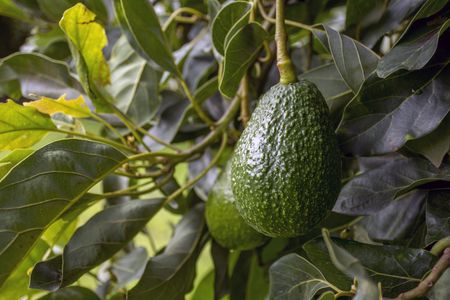AVO-INFO
At La Morena we not only LOVE avocados but we want to share our love for this delicious berry with you. That's right, not only is an avocado a fruit, but it's also a berry because it has fleshy pulp and a seed!
Learn more about the availability, ripening process and history of the avocado below!
AVAILABILITY

Mexico's Growing Season: Year-Round
California's Growing Season: January to October
RIPENESS

COLOR
Unripened fruit is usually a lighter green color, while ripe fruit is dark green or nearly black. However, a uniform softness is a better indicator of an avocado's ripeness.
STORAGE
Stage 2-4 fruit can be held at room temperature (65°-70°) to continue ripening. Stage 4-5 fruit can be stored at 35°-40° for up to one week.
HISTORY
Researchers believe that Mesoamerican tribes were the first to domesticate the avocado tree nearly 5,000 years ago in modern-day southern Mexico. The avocado was extremely important among the indigenous people of ancient Mesoamerica, as the fruit provided numerous nutrients and sustenance.
By the 16th century the fruit had spread throughout Central and South America and had made its way across the Atlantic Ocean to Europe with Spanish explorers.

Today, the U.S. accounts for 79% of avocados exported from Mexico and is the largest consumer of avocados in the world.

The less-appetizing name stuck until a marketing effort from American avocado growers in the early 1900s successfully changed the name back to avocado. In India, the fruit is sometimes called the ‘butter fruit’ due to the buttery texture of the avocado’s meat.

